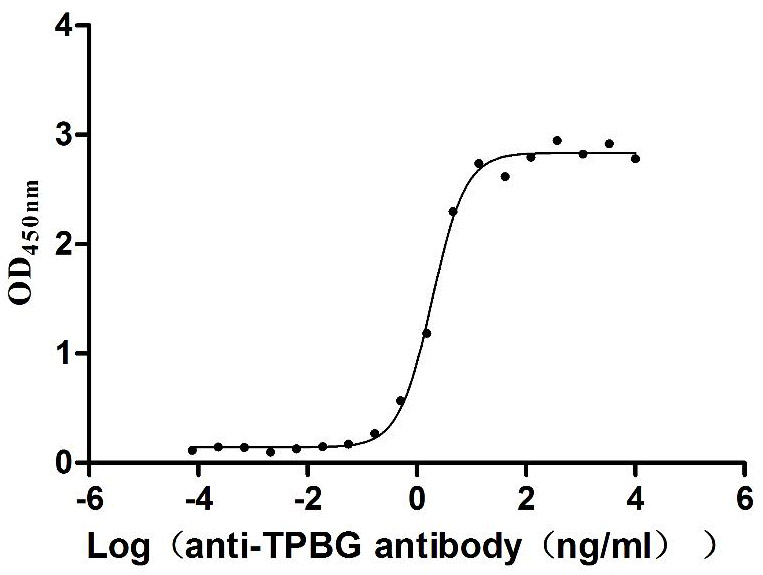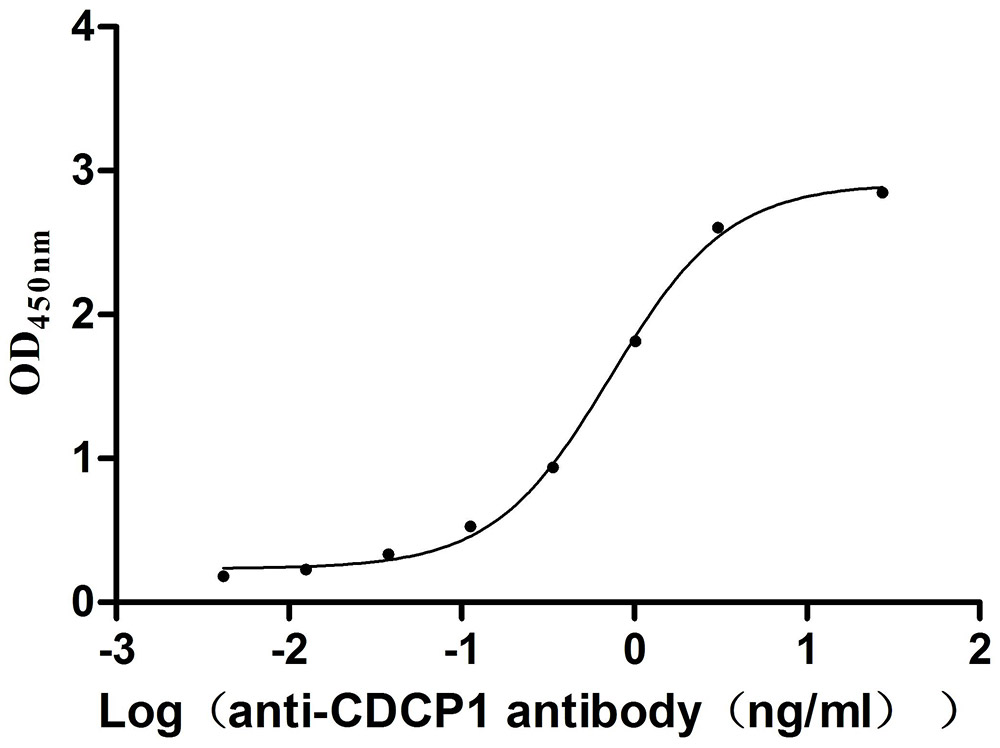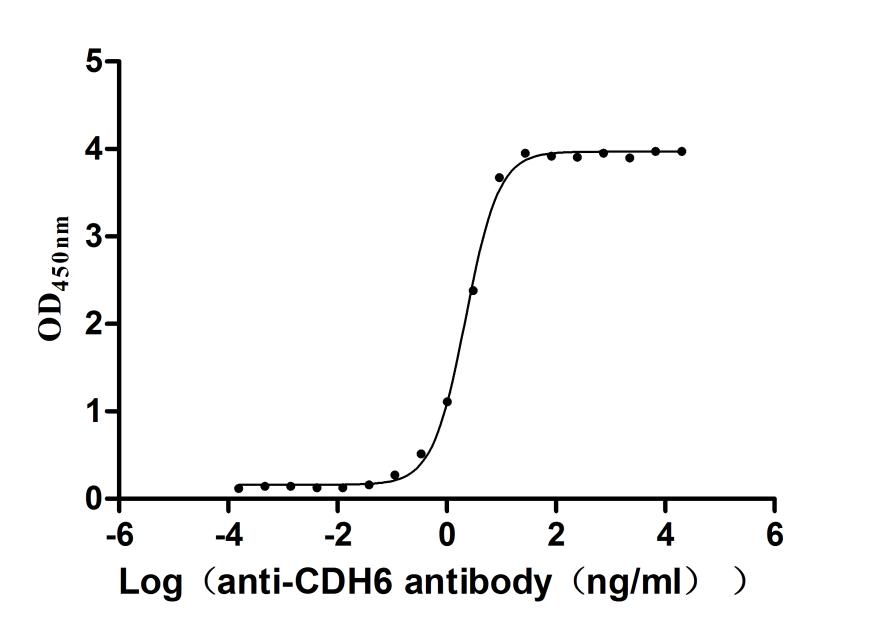Recombinant Mouse Sodium- and chloride-dependent glycine transporter 1 (Slc6a9), partial
-
中文名稱:小鼠Slc6a9重組蛋白
-
貨號:CSB-YP021708MO
-
規(guī)格:
-
來源:Yeast
-
其他:
-
中文名稱:小鼠Slc6a9重組蛋白
-
貨號:CSB-EP021708MO
-
規(guī)格:
-
來源:E.coli
-
其他:
-
中文名稱:小鼠Slc6a9重組蛋白
-
貨號:CSB-EP021708MO-B
-
規(guī)格:
-
來源:E.coli
-
共軛:Avi-tag Biotinylated
E. coli biotin ligase (BirA) is highly specific in covalently attaching biotin to the 15 amino acid AviTag peptide. This recombinant protein was biotinylated in vivo by AviTag-BirA technology, which method is BriA catalyzes amide linkage between the biotin and the specific lysine of the AviTag.
-
其他:
-
中文名稱:小鼠Slc6a9重組蛋白
-
貨號:CSB-BP021708MO
-
規(guī)格:
-
來源:Baculovirus
-
其他:
-
中文名稱:小鼠Slc6a9重組蛋白
-
貨號:CSB-MP021708MO
-
規(guī)格:
-
來源:Mammalian cell
-
其他:
產(chǎn)品詳情
-
純度:>85% (SDS-PAGE)
-
基因名:Slc6a9
-
Uniprot No.:
-
別名:Slc6a9; Glyt1; Sodium- and chloride-dependent glycine transporter 1; GlyT-1; GlyT1; Solute carrier family 6 member 9
-
種屬:Mus musculus (Mouse)
-
蛋白長度:Partial
-
蛋白標(biāo)簽:Tag?type?will?be?determined?during?the?manufacturing?process.
The tag type will be determined during production process. If you have specified tag type, please tell us and we will develop the specified tag preferentially. -
產(chǎn)品提供形式:Lyophilized powder
Note: We will preferentially ship the format that we have in stock, however, if you have any special requirement for the format, please remark your requirement when placing the order, we will prepare according to your demand. -
復(fù)溶:We recommend that this vial be briefly centrifuged prior to opening to bring the contents to the bottom. Please reconstitute protein in deionized sterile water to a concentration of 0.1-1.0 mg/mL.We recommend to add 5-50% of glycerol (final concentration) and aliquot for long-term storage at -20℃/-80℃. Our default final concentration of glycerol is 50%. Customers could use it as reference.
-
儲存條件:Store at -20°C/-80°C upon receipt, aliquoting is necessary for mutiple use. Avoid repeated freeze-thaw cycles.
-
保質(zhì)期:The shelf life is related to many factors, storage state, buffer ingredients, storage temperature and the stability of the protein itself.
Generally, the shelf life of liquid form is 6 months at -20°C/-80°C. The shelf life of lyophilized form is 12 months at -20°C/-80°C. -
貨期:Delivery time may differ from different purchasing way or location, please kindly consult your local distributors for specific delivery time.Note: All of our proteins are default shipped with normal blue ice packs, if you request to ship with dry ice, please communicate with us in advance and extra fees will be charged.
-
注意事項:Repeated freezing and thawing is not recommended. Store working aliquots at 4°C for up to one week.
-
Datasheet :Please contact us to get it.
靶點(diǎn)詳情
-
功能:Terminates the action of glycine by its high affinity sodium-dependent reuptake into presynaptic terminals. May play a role in regulation of glycine levels in NMDA receptor-mediated neurotransmission.
-
基因功能參考文獻(xiàn):
- GlyT1 and not GlyT2 is essential for the replenishment of the presynaptic glycine pool in retinal AII amacrine cells and is a major determinant of the glycinergic phenotype of this cell population. PMID: 29808289
- the expression of inhibitory neurotransmitter transporters GlyT1, GAT-1, and GAT-3 in inferior colliculus and hippocampus astrocytes, was examined. PMID: 29370841
- Whole-exome sequencing revealed a novel homozygous missense variant in exon 9 of SLC6A9 NM_201649.3: c.1219 A>G (p.Ser407Gly) that segregates with the disease within the family. In murine model, knockout of Slc6a9 is associated with equivalent phenotype of non-ketotic hyperglycinemia (NKH), namely respiratory distress and hypotonia. PMID: 27481395
- pharmacologic or genetic abolishment of GlyT1 activity in mice leads to mildly elevated glycine in the CSF but not in blood PMID: 27773429
- Study demonstrated a biphasic response of GlyT1 expression during epileptogenesis with initial downregulation of GlyT1 after epileptogenesis-precipitating seizures followed by sustained pathological overexpression of GlyT1 in chronic epilepsy PMID: 26302655
- Results suggest that the excessive GAT-1 and GlyT-1/2 heterotransporter-mediated Glu release, in the spinal cord of SOD1(G93A) mice, is due to the heterotransporter over-expression at the nerve terminal membrane, promoted by the excessive Glu exocytosis PMID: 25497732
- the possible involvement of calmodulin or calmodulin-like interactions in the regulation of GlyT1 C-mediated transporter trafficking PMID: 25168305
- Disruption of GlyT1 in forebrain neurons does not increase the risk of forming spurious and potentially maladaptive fear associations. PMID: 25043729
- The demonstrated increased sensitivity to the effect of CS-US temporal discontiguity further highlights the importance of GlyT1-dependent mechanisms in the regulation of associative learning. PMID: 24480413
- This study demonistrated that the GlyT1-/+ subjects quickly reached a plateau response to AMPH, which remained stable during drug withdrawal PMID: 22763616
- These alterations in the activities and expression profiles of the GlyTs suggest that the contributions of GlyT1 and GlyT2 to the regulation of extracellular glycine concentrations at glycinergic synapses changes during development. PMID: 22695116
- This study demonistrated that forebrain neuronal glycine transporter 1 deficine not cause working memory disorders. PMID: 22342492
- HMGN3a/b binding leads to increased H3K14 (Lys(14) of histone H3) acetylation and stimulates Glyt1a expression PMID: 22150271
- These results demonstrate in mice that depending on the regional and/or cell-type specificity, deletion of the GlyT1 gene could yield divergent effects on prepulse inhibition. PMID: 20647165
- mice with Glyt1 disruption in forebrain demonstrated enhanced adversive Pavlovian conditioning, which was modified with age. Also increase in the number of immature neurons in the hippocampus of the mutants PMID: 21038935
- This study demonistrated that Adenoviral-mediated Cre expression effectively suppresses GlyT1 binding in the thalamic area of GlyT1 conditional knock-out mice. PMID: 20832426
- We show that immunoreactivity against the last 12 amino acids of GlyT1C-terminal region exhibits robust calcium dependent decline PMID: 20542070
- glial GlyT1 is critical for the regulation of glycine levels at inhibitory synapses only during early postnatal life PMID: 20468048
- study examined the role of GlyT1, the high-affinity glycine transporter, in the retina with an emphasis on the role of glycine as a coagonist of N-methyl-D-aspartic acid (NMDA) receptor PMID: 20092573
- GLYT1, a glycine transporter of the neurotransmitter transporter gene family, functions as the organic osmolyte transporter that mediates the osmotically regulated accumulation of glycine and regulates cell volume in early embryos. PMID: 14615585
- During early postnatal life, GlyT1 is essential for regulating glycine concentrations at inhibitory GlyRs, and GlyT1 deletion generates symptoms found in human glycine encephalopathy PMID: 14622582
- results suggest that HMGN3 regulates glycine transporter 1 expression and demonstrate that members of the HMGN family can regulate the transcription of specific genes PMID: 15082770
- Data show that reduced expression of glycine transporter 1 enhances hippocampal NMDA receptor function and memory retention and protects against an amphetamine disruption of sensory gating. PMID: 15159536
- Overall, these findings highlight the importance of GlyT1 in regulating glutamatergic neurotransmission. PMID: 15661817
- intracellular accumulation of glycine in embryos is a direct function of the rate of glycine uptake via GLYT1 PMID: 15672418
- Neuronal Glycine Transporter I normally assumes a specific role in the regulation of NMDA receptor responses. PMID: 16554468
- Here we demonstrate a segregated expression of GlyT1 on different astroglial cell populations of the ventral respiratory group. PMID: 17010320
- mice in which GlyT1 has been deleted demonstrate enhanced object recognition memory PMID: 17907847
- These findings highlighted the possibility of a functional divergence between the neuronal and glia subpopulations of GlyT1 in the regulation of learning and memory processes. PMID: 19332109
- Data show that GLYT1 is quiescent in mouse germinal-vesicle-stage oocytes but becomes fully activated within hours after ovulation is triggered. PMID: 19502485
- forebrain neuronal GlyT1 may modulate the flexibility in (new) learning and relevant mnemonic functions. PMID: 19824767
顯示更多
收起更多
-
亞細(xì)胞定位:Membrane; Multi-pass membrane protein.
-
蛋白家族:Sodium:neurotransmitter symporter (SNF) (TC 2.A.22) family, SLC6A9 subfamily
-
組織特異性:Expressed in the brain (at protein level). At 11 dpc, expressed in the ventral part of the ventricular zone. At 15 dpc, also expressed in adjacent mantle tissue and the meninges. Strongly expressed in 12 dpc and 15 dpc liver.
-
數(shù)據(jù)庫鏈接:
Most popular with customers
-
Recombinant Human UL16-binding protein 1 (ULBP1) (Active)
Express system: Mammalian cell
Species: Homo sapiens (Human)
-
Recombinant Human Insulin growth factor-like family member 1 (IGFL1) (Active)
Express system: Mammalian cell
Species: Homo sapiens (Human)
-
Recombinant Macaca mulatta Microtubule-associated protein tau (MAPT) (Active)
Express system: Mammalian cell
Species: Macaca mulatta (Rhesus macaque)
-
Recombinant Human R-spondin-1 (RSPO1), partial (Active)
Express system: Mammalian cell
Species: Homo sapiens (Human)
-
Recombinant Mouse Claudin-18.2 (Cldn18.2)-VLPs (Active)
Express system: Mammalian cell
Species: Mus musculus (Mouse)
-
Recombinant Macaca fascicularis Trophoblast glycoprotein (TPBG), partial (Active)
Express system: Mammalian cell
Species: Macaca fascicularis (Crab-eating macaque) (Cynomolgus monkey)
-
Recombinant Mouse CUB domain-containing protein 1 (Cdcp1), partial (Active)
Express system: Mammalian cell
Species: Mus musculus (Mouse)
-
Recombinant Macaca fascicularis Cadherin 6(CDH6),partial (Active)
Express system: Mammalian cell
Species: Macaca fascicularis (Crab-eating macaque) (Cynomolgus monkey)


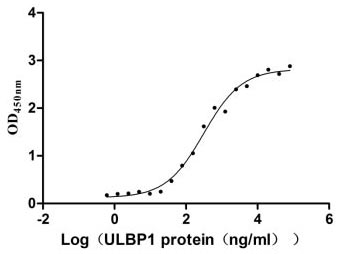
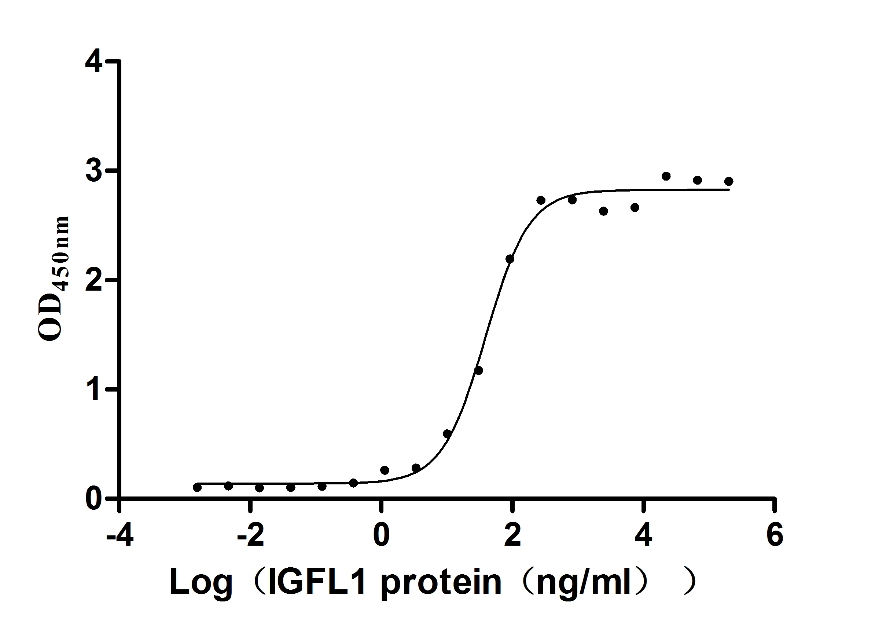
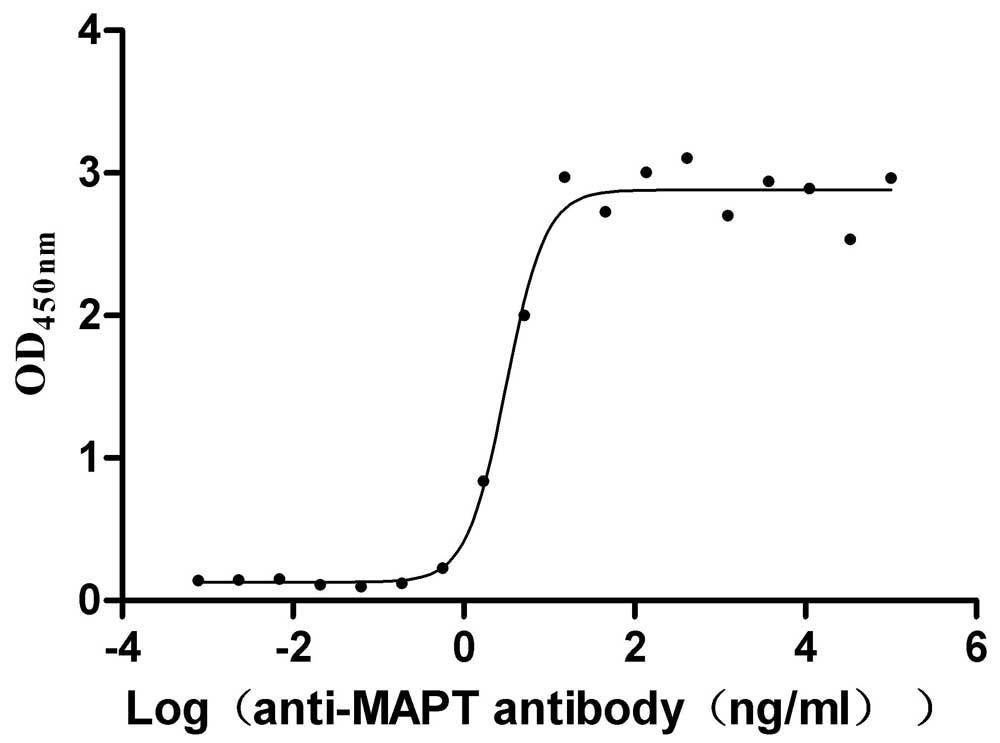
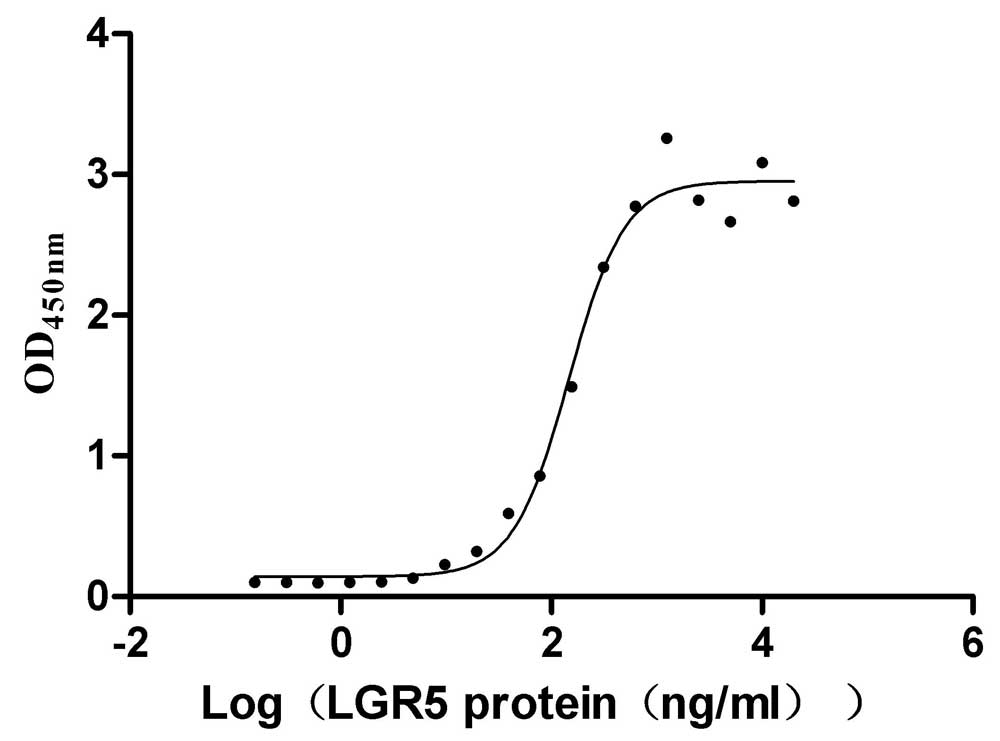
-AC1.jpg)
